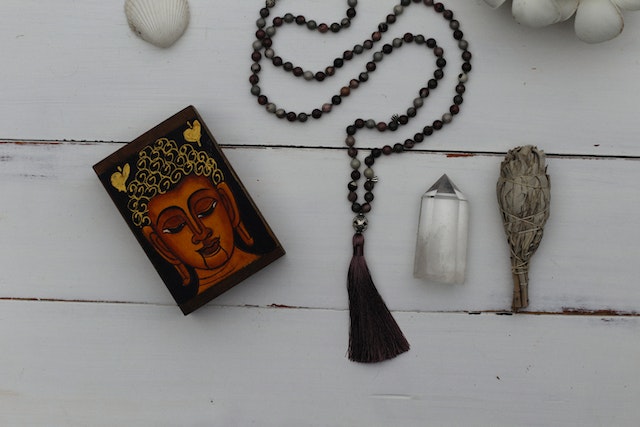Welcome to the wonderful world of polymer clay! If you have ever wanted to create unique and personalized items, then this easy guide is perfect for you. Polymer clay is a versatile and vibrant medium that allows you to unleash your creativity and make one-of-a-kind treasures. Whether you are a seasoned artist or just starting out on your crafting journey, polymer clay offers endless possibilities. So grab your sculpting tools and let’s dive into the exciting realm of making personalized items with polymer clay!
The Different Types of Polymer Clay
Polymer clay comes in a variety of types, each with its own unique characteristics and properties. One popular type is the classic polymer clay, which is available in an array of vibrant colors and is perfect for creating intricate designs. It is durable and can be baked to a hard finish that can withstand daily use.
Another type of polymer clay is translucent, which allows light to pass through it, giving your creations a beautiful glow. This type of clay is often used in jewelry making or when you want to achieve a delicate and ethereal effect.
There are also specialty polymer clays like metallic or pearlized clays that add a touch of shimmer and glamour to your projects. These clays are great for making statement pieces or adding accents to your creations.
If you’re looking for something more flexible and pliable, there are also softer versions of polymer clay available. These types allow for easier manipulation and bending without breaking.
Regardless of the type you choose, all polymer clays share one common trait – they can be cured by baking them in an oven at low temperatures. This process transforms the pliable material into a solid form that retains its shape.
No matter which type you decide on, experimenting with different varieties will open up new possibilities for your crafting adventures!
Pros and Cons of Using Polymer Clay
Polymer clay is a versatile and popular medium used by many craft enthusiasts to create unique and personalized items. Like any other material, it has its own set of pros and cons that should be considered before diving into your next project.
One of the major advantages of using polymer clay is its flexibility. It can be easily molded, shaped, and sculpted to create intricate designs or simple shapes. This makes it ideal for creating personalized jewelry pieces, figurines, or even home decor items.
Another advantage is that polymer clay comes in a wide variety of colors and finishes. Whether you prefer vibrant hues or metallic shades, there’s sure to be a color that suits your taste. Additionally, with the right techniques and tools, you can achieve different textures like marble or wood grain effects.
The durability of polymer clay is another plus point. Once baked properly at the correct temperature and time recommended by the manufacturer, it becomes hard and durable like plastic. This means your creations will last for years if taken care of properly.
On the flip side, one disadvantage of using polymer clay is that it requires baking in an oven or toaster oven to cure properly. This step may require some trial-and-error until you find the right temperature settings for your particular brand of clay.
Additionally, working with polymer clay can sometimes be challenging for beginners as it requires practice to master certain techniques such as blending colors seamlessly or achieving smooth surfaces without fingerprints.
While polymer clay itself is relatively inexpensive compared to other art mediums like precious metals or ceramics, accumulating all the necessary tools such as cutters, molds,
and finishing materials can add up over time.
Overall,polymer clay offers endless possibilities for creativity but does come with its own set
of challenges.
It’s important to weigh these pros and cons before deciding whether this art form aligns with your skills,tastes,and budget constraints
How to Use Polymer Clay?
Polymer clay is an incredibly versatile and fun medium to work with, and learning how to use it opens up a world of possibilities for creating personalized items. Whether you’re a beginner or have some experience with other types of clay, here are some tips on how to get started with polymer clay.
First things first, make sure you have all the necessary tools and supplies. You’ll buy polymer clay in your desired colors, an oven for baking the clay, sculpting tools like knives or toothpicks, a rolling pin or pasta machine for flattening the clay, and a non-porous surface to work on.
Before diving into your project, condition your polymer clay by kneading it until it becomes soft and pliable. This helps remove any air bubbles and makes the clay easier to shape. It’s also essential to clean your hands thoroughly before working with different colors of clay to avoid unwanted color mixing.
Once conditioned, start shaping your polymer clay by using your hands or sculpting tools. The possibilities are endless – you can create beads for jewelry making, miniature figurines for dollhouses or dioramas, keychains or charms for personalizing accessories…the list goes on!
When working on intricate designs or details, take advantage of various techniques such as blending colors together by gently pressing them against each other or adding texture by stamping patterns onto the surface of the clay.
After finishing your creation comes the baking process. Follow manufacturer instructions regarding temperature and duration as these may vary depending on the brand of polymer clay you’re using. Keep in mind that overbaking can cause discoloration or even burning.
Once baked and cooled down completely (don’t rush this step!), you can add additional touches like painting with acrylics or sealing with varnish if desired.
Using polymer clay offers endless opportunities for creativity while allowing you to make unique personalized items tailored specifically to suit individual tastes. So go ahead – let your imagination run wild and have fun exploring the world of polymer clay!
How to find quality polymer clay in Australia
Finding quality polymer clay in Australia can be a daunting task, but with a little research and patience, you can discover some hidden gems. One of the first places to start is online. There are numerous websites that specialize in selling polymer clay and offer a wide range of brands and colors to choose from.
Another option is to visit local craft stores or art supply shops. Many of these establishments carry polymer clay, and it’s always beneficial to see the product in person before making a purchase. Plus, you may even find knowledgeable staff members who can provide guidance on which brands are the best.
If you’re looking for more specialized options, consider checking out local artist communities or attending craft fairs and exhibitions. These events often feature artisans who work with polymer clay and may have their own recommendations for where to find high-quality supplies.
Don’t underestimate the power of word-of-mouth recommendations. Reach out to fellow artists or join online forums dedicated to polymer clay crafting; they can be excellent resources for finding reputable suppliers.
Remember, when searching for quality polymer clay in Australia, it’s essential to read reviews and do your due diligence before purchasing. By taking these steps, you’ll ensure that you’re getting top-notch materials for your personalized creations!
Personalised Items You Can Make with Polymer Clay
Personalised Items You Can Make with Polymer Clay
Polymer clay is a versatile and fun material to work with, allowing you to create unique and personalised items that can make great gifts or additions to your own home. Here are some ideas for what you can make using polymer clay:
1. Jewelry: From earrings and necklaces to bracelets and rings, polymer clay allows you to design one-of-a-kind pieces that reflect your personal style. Create colorful beads, intricate pendants, or even statement pieces that will surely catch the eye.
2. Keychains: Give your keys a touch of personality by making custom keychains out of polymer clay. You can shape them into cute animals, funky shapes, or even mini replicas of objects that hold special meaning for you.
3. Home Decor: Polymer clay opens up endless possibilities when it comes to home decor items. Design decorative bowls, coasters, candle holders, or even plant pots – all uniquely crafted by hand.
4. Figurines: Whether it’s creating miniature animals or sculpting characters from your favorite book or movie, polymer clay allows you to bring your imagination to life in three-dimensional form.
5. Personalized Gifts: Show someone you care by gifting them a personalized item made from polymer clay. It could be a nameplate for their desk at work, a customized photo frame capturing precious memories together, or even a small figurine representing something they love.
The options are truly limitless when it comes to what you can create with polymer clay! Let your creativity soar as you experiment with different colors and techniques to craft beautiful and meaningful items that are uniquely yours.
Alternatives to Polymer Clay
In the world of crafting and DIY projects, polymer clay has become a popular choice for creating personalized items. However, it’s always good to explore alternative options that can offer unique possibilities. Here are some alternatives to consider if you’re looking to expand your creative horizons:
1. Air Dry Clay: Unlike polymer clay, air dry clay doesn’t require baking in an oven or kiln. It dries naturally when left exposed to air. This makes it a convenient option for those who don’t have access to baking facilities or prefer a simpler process.
2. Epoxy Resin: If you’re interested in creating glossy and durable pieces, epoxy resin might be the perfect alternative for you. It can be poured into molds or used as a coating on various surfaces, allowing you to make custom jewelry, coasters, and other decorative items.
3. Ceramic Clay: For those seeking a more traditional approach, ceramic clay provides endless possibilities in pottery making and sculpting techniques. With firing required at high temperatures in a kiln, ceramic clay offers durability and versatility.
4. Paper Clay: Made from pulped paper fibers mixed with clay minerals or cellulose fiber powder, paper clay is lightweight and versatile material that can be used like traditional modeling clays but with added benefits such as reduced shrinkage during drying.
5.
Wood Carving: If you enjoy working with natural materials and want to create intricate designs, wood carving may be worth exploring further.
It allows for beautiful handcrafted art pieces ranging from sculptures to functional objects like spoons or bowls.
While polymer clay remains popular due its ease of use and wide range of colors available on the market today,the mentioned alternatives provide different textures,effects,and avenues for creativity.
Allowing artists,crafters,and hobbyists alike,to experiment with new materials,in turn broadening their artistic capabilities.
Whether trying out one of these alternatives or sticking with polymer clay,you’ll surely find joy in the process of creating personalized items that reflect your unique style and creativity.





